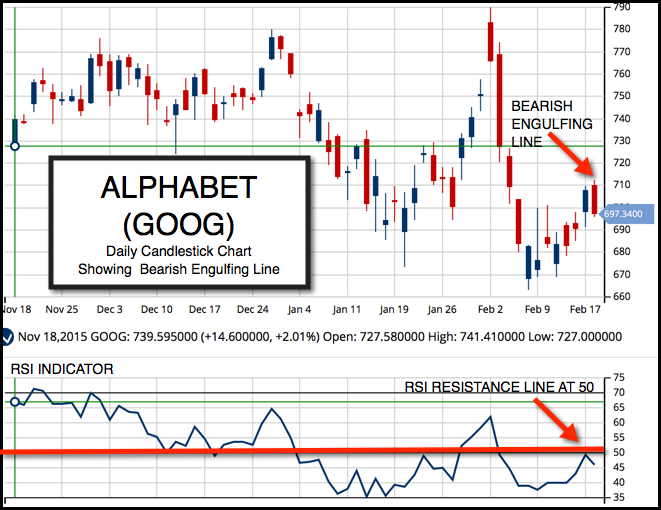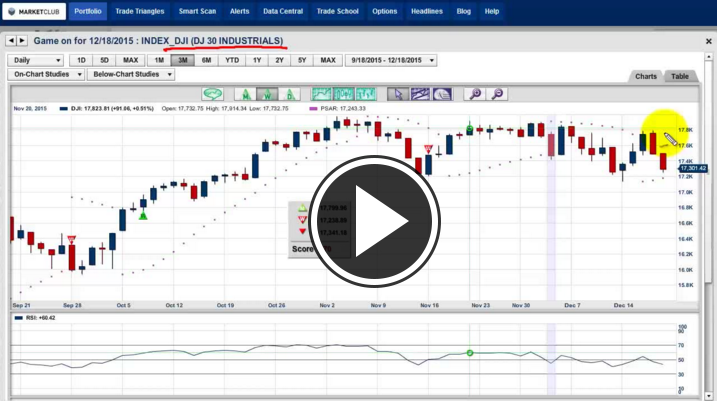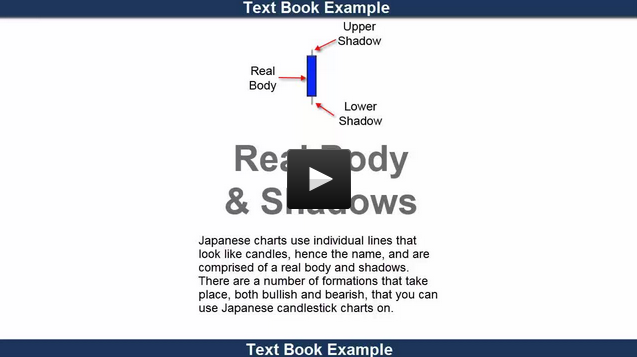Hello MarketClub members everywhere. Well, here we are at the end of one extraordinary week for the equity markets. I don’t remember a week where we watched the major market indices rally so dramatically from a bearish position in just three days.
In today's post, I'm going to be looking at the big 3 A's, Alphabet, Amazon and Apple. What these three stocks have in common is that they are all in downtrends and they all formed a negative (bearish) engulfing line yesterday. Should any of these three stocks close lower today, they will confirm that the high on Thursday will be a formidable resistance area for these stocks to overcome in the future.
Alphabet Inc.(NASDAQ:GOOG)
Trade Triangles: Weekly red, Monthly red, overall trend is bearish, trend strength -85.
Alphabet has a negative trend at the moment even though it has been extraordinarily strong in the past several years. It's not to say that it's going to hell in a hand basket, but rather it will begin to reflect a slowing economy that is evident in both the retail and dining sector. I would view a close below $697.34 as a confirming signal that it has put in an interim top and is going to retest its recent lows. Continue reading "Alphabet, Amazon and Apple All Have Something In Common"



